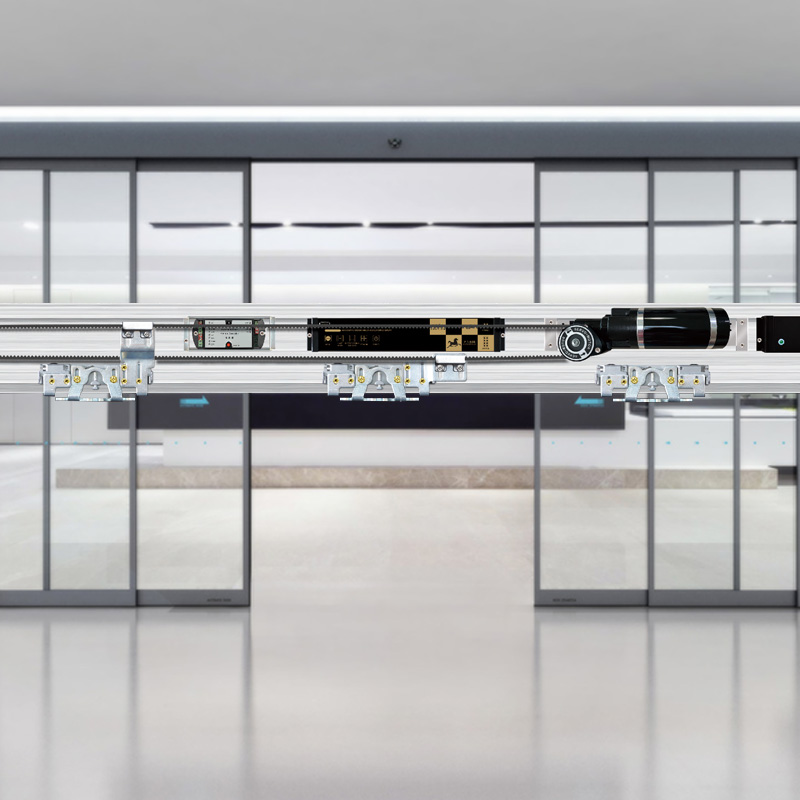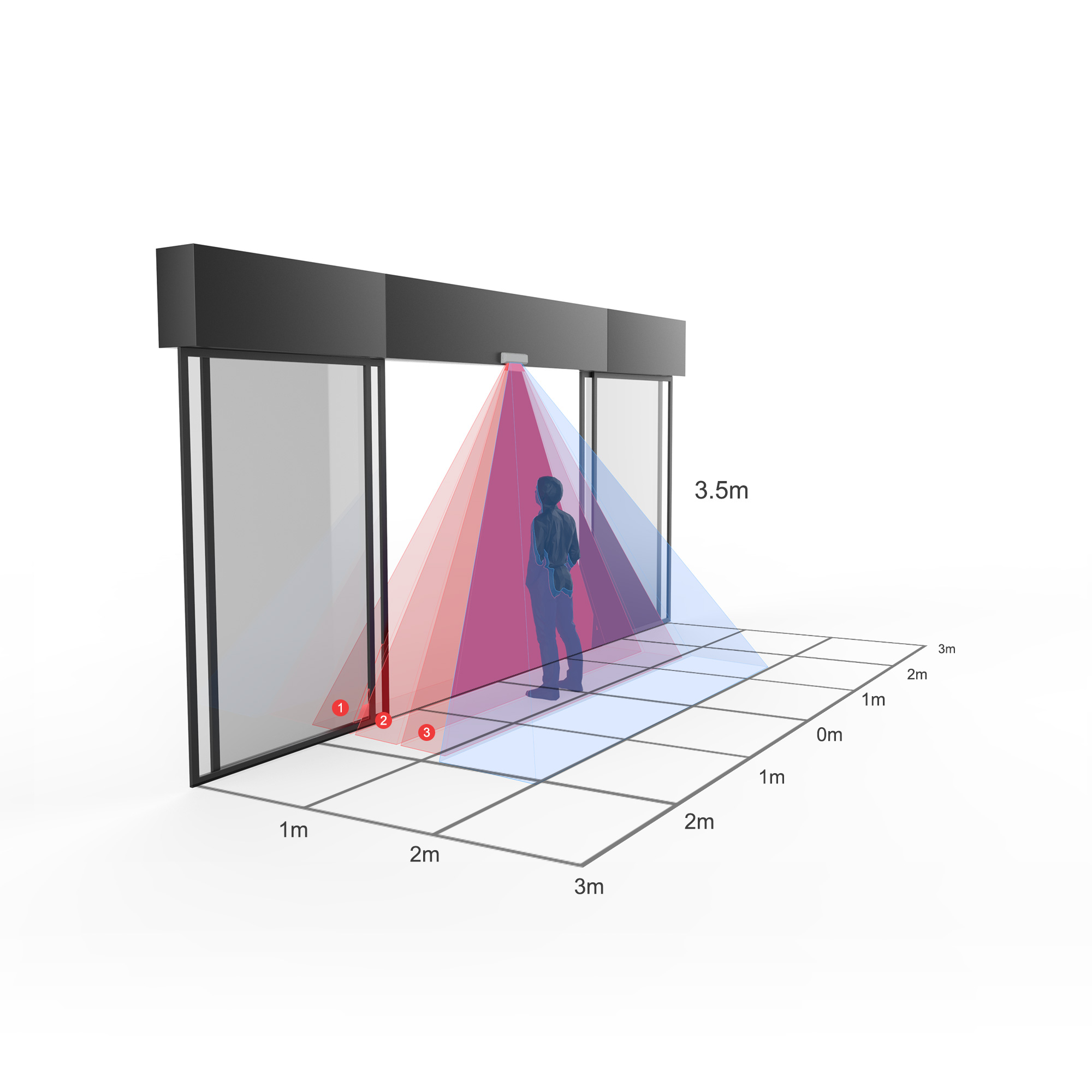Automatic doors play a crucial role in modern architecture, providing convenient and barrier-free access in commercial buildings, public transportation facilities, and more. The speed and precision of automatic door operators are vital factors affecting user experience and safety. This article will explore whether the speed and precision of automatic door operators can meet the demands of different scenarios.

Automatic door operators use motors and control systems to achieve automatic door opening and closing. Common types of automatic door operators include sliding door operators, revolving door operators, and folding door operators, each with unique applications and characteristics.
Sliding door operators drive the door horizontally along a track using a motor. They are widely used in malls, supermarkets, hospitals, and other places due to their small footprint and convenient access. The opening and closing speed and precision of sliding door operators directly impact passage efficiency and safety.
Revolving door operators drive the door to rotate around a central axis using a motor. They are typically used in high-end hotels, office buildings, and airports with high traffic volumes. Revolving doors can effectively control airflow, save energy, and enhance the aesthetic appeal of buildings. The opening and closing speed and precision of revolving doors require high safety standards, especially during peak times to ensure safe passage for people.
Folding door operators drive the door to fold and unfold using a motor. They are mainly used in smaller spaces, such as store entrances and residential areas. Folding doors can provide a wide passage width in limited space, and their opening and closing speed and precision need to maximize passage efficiency while ensuring safety.

Different scenarios have different requirements for the speed and precision of automatic door operators. Here are some key technical indicators:
Speed refers to the time it takes for the door operator to complete opening or closing. Appropriate speed can improve passage efficiency and reduce waiting time. However, excessively fast speed can pose safety risks to users, so a balance between speed and safety is necessary.
Opening and Closing Time: The time it takes for the door to move from start to fully open or closed. Typically, automatic doors in commercial settings have an opening and closing time of 1-5 seconds, while public transportation facilities require shorter times to handle high traffic volumes.
Acceleration and Deceleration: The rate of speed change when the door starts and stops. Reasonable acceleration and deceleration ensure smooth door movement, avoiding sudden speed changes that could cause discomfort or danger to users.
Precision refers to the operator's ability to control the door's position accurately during opening and closing. High precision ensures the door reaches the intended position, avoiding intermediate stops or overshooting.
Position Accuracy: The deviation of the door from the target position. High-precision operators can control the deviation within a few millimeters, ensuring accurate positioning and reducing operational errors and safety hazards.
Repeatability: The stability of the door reaching the same position during multiple opening and closing cycles. High repeatability ensures consistent performance over long-term use, reducing maintenance frequency and costs.
In shopping malls and supermarkets, automatic doors need to handle significant daily traffic demands. Efficient speed and reliable precision can enhance the shopping experience while ensuring safety.
Peak Traffic Efficiency: During high traffic periods, the opening and closing speed of automatic doors must be fast enough to avoid crowding and bottlenecks. Typically, these settings require opening and closing speeds of 1-3 seconds.
Safety: While operating at high speeds, automatic doors must have sufficient precision and sensitivity to prevent injuries to customers, especially protecting children and the elderly.
In airports, train stations, and subway stations, the speed and precision of automatic doors directly impact passenger flow efficiency and safety.
Rapid Passage: These facilities often require automatic doors to complete opening and closing within 1 second to handle large passenger volumes during peak times.
Safety Assurance: Automatic doors need high-precision control systems to ensure accurate closure in all circumstances, preventing passengers from being trapped. Emergency stop functions are also necessary to halt movement upon detecting obstacles.
In hospitals and clinics, the speed and precision of automatic doors affect patient movement and emergency response efficiency.
Barrier-Free Access: Automatic doors must provide quick access for wheelchairs, stretchers, and other assistive devices, with opening and closing speeds of 2-4 seconds.
Quiet Operation: To avoid disturbing patients, automatic doors should operate quietly while maintaining precision to ensure smooth, noise-free movement.
In high-end hotels and office buildings, automatic doors need to meet functional requirements while enhancing the building's overall aesthetic appeal and prestige.
Elegant Movement: The speed should be moderate, generally between 2-3 seconds, ensuring smooth and stable door movement without shaking to enhance user experience.
High-Precision Control: High-precision control systems ensure consistent speed and position during each operation, enhancing the building's high-end image.
To meet the demands of different scenarios, automatic door operator technology is continuously evolving. Here are some major trends:
Modern automatic door operators increasingly use intelligent control technology, adapting to environmental changes through sensors and algorithms. For example, operators can automatically adjust speed and sensitivity based on factors such as ambient light, temperature, and traffic flow, improving operational efficiency and safety.
With growing environmental awareness, energy-efficient automatic door operator technology has emerged. By optimizing motor and control system designs, energy consumption is reduced while maintaining precise control to minimize unnecessary operations and extend equipment lifespan.
Safety remains a core focus in the development of automatic door operator technology. In addition to traditional anti-pinch functions, modern operators integrate more safety features such as obstacle detection, emergency stop, and escape modes to handle various emergencies.
To meet specific needs in different scenarios, manufacturers offer more custom design options. Users can choose different speeds, precision, materials, and appearances based on their requirements for optimal application results.
The speed and precision of automatic door operators have different technical requirements depending on the scenario. Through continuous technological innovation and improvement, modern automatic door operators can meet most application scenarios' needs in terms of speed and precision. However, to ensure optimal performance, it is necessary to select and adjust operators based on specific usage environments and requirements.
In the future, with the development of intelligent and automated technology, automatic door operators will become more intelligent and efficient, further enhancing user experience and safety. Whether in commercial buildings, public transportation facilities, healthcare institutions, or high-end hotels and office buildings, automatic door operators will play an increasingly important role, providing more convenient, safe, and aesthetically pleasing access solutions.